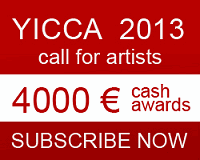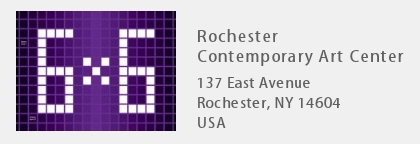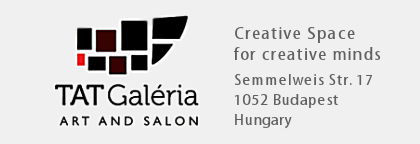Details
- 2013-07-04
- 0
- 77
- Painting
- Aerosol Paint
- Conceptual
Pricing
Price and availability not indicated

- THEY KNOW OUR NAMES -
Description by Mister 13
Aerosol spray and kleenex on canvas. When the answers found in religions or science seemingly fail to satisfy the curiosity people have about the paranormal, many paranormal researchers turn to alternate forms of spirituality. These alternate explanations do not necessarily explain paranormal phenomena, but they certainly help to promote ideas and beliefs not belonging to the religion. Some paranormal researchers do this in order to excite and please the masses, and perhaps there is also the aspect that many paranormal researchers are themselves sincere believers of alternate belief systems and superstition. However, when these alternate forms of spirituality fail to legitimize paranormal phenomena among sceptics, science becomes the next alternative. Many people are under the false impression that paranormal investigations are scientific, simply because some forms of technology are included in the investigations. Paranormal research is not a recognized science. The reasons for this are many, but the most obvious reason is that numerous frauds have destroyed the credibility of paranormal phenomena as worthy of scientific endeavour. Before any comparison between science and paranormal phenomena can be explored, the following is a general description of what science is. The word ‘Science’ comes from the Latin word scientia, meaning, knowledge. Science explores a broad field of knowledge that deals with observed facts and the relationships existing among those facts. Scientific theories utilize general rules or laws that attempt to explain how and why something happens or happened. More specifically, scientific theory organizes knowledge in the form of testable explanations and predictions about the natural world. Paranormal theories do not adhere to the rules and laws of scientific theory, and are at most, philosophical. There are numerous paranormal theories, each deserving greater attention, but some things will be mentioned here in order to provide a sense of how paranormal theories differ from scientific theories. As stated, paranormal theories often fall outside any of the rules or laws applied to scientific theory, although they are thought to have some scientific basis – for example: the theory that ghosts can generate Electro Magnetic Fields (or EMF) that can be measured with EMF meters. Many cases involving a haunting or poltergeist have reported electrical lighting being affected in some way. One explanation for this theory is that due to such reports, the manifestation itself is electrical. The problem with this theory is that it excludes how a haunting or poltergeist activity is also said to include a variety of other influences on physical surroundings having nothing to do with electricity. In other words, any affect on electrical lighting is incidental and belongs to a wide range of experiences belonging to both a haunting and poltergeist activity – to which EMF does not apply. The question, then, is how can such phenomena be reduced to Electro Magnetic Field? Other paranormal theories following this first example claim that the human body is bio-electric and that when the body dies, the energy cannot be destroyed, but transforms from one state to another. This change of state of energy is thought to become a ghost in most cases. Sounds scientific? At first, it does sound convincing. According to science, neurons are electrical impulses active in the brain. What the paranormal theory attempts to do is to use the first law from Thermodynamics, which states: “Energy can be neither created nor destroyed. It can only change forms from one state to another.” By including this scientific rule or law, the paranormal researcher attempts to legitimize his or her theory concerning ghosts. Although this is certainly an interesting theory, it is problematic in other ways. In terms of how conclusions are often made without any testable explanations, what remains is the use of EMF meters to demonstrate an affect. The EMF thought to be detectable in paranormal phenomena involving ghosts, a haunting, or poltergeist activity is never demonstrated properly. If a house is thought to be haunted, and a paranormal investigator uses an EMF meter, there will most certainly be something measured, and not necessarily because a ghost is present. What actually occurs are measurements being made in relation to environments that naturally produce EMF – electrical wiring, computers, and other household appliances; an electrically charged object. In fact, EMF meters are designed to measure fields generated from electrically charged objects, and not ghosts. Having briefly examined paranormal theory concerning EMF and ghosts, it is easy to recognize how science is simply misapplied to support a belief without any proper testable explanations. The technology used to draw conclusions from such environments as homes and other buildings is not practical to any testable explanation. The reason is largely due to how this paranormal theory misrepresents why electrical lighting is affected, by excluding other circumstances associated to the same paranormal phenomena. This does not mean that EMF is not worth investigating. The point here is that EMF meters are used to detect EMF and do not verify a paranormal phenomenon alone. Some paranormal researchers use EMF along with video/photography, EVP, and so forth. However, there are problems with these other forms of technology that are used to give the impression that something scientific is being applied to the paranormal investigation itself. Photography is another form of technology used among paranormal investigators, seeking to give credibility to their research as a science. In the hopes of capturing anything unusual, photography could potentially provide a record of paranormal phenomena. In the past, “Spirit Photography” was a form of evidence produced by many Modern Spiritualists from the mid 19th to early 20th century. Most of those photos, if not all, were faked. Some of the more infamous examples were faked by people such as William H. Mumler (b.1832–d.1884) and William Hope (b.1863–d.1933). The “theory” belonging to Modern Spiritualism during the 19th century consisted of the belief that spirits could communicate with the living through photography by permitting themselves to be photographed, with the assistance of a medium. Since that time, other paranormal theories involving photography have developed, having little to do with science. Strange images or anomalies have been photographed, and although there are scientific explanations, paranormal theories continue to be promoted. Among the various types of anomalies occurring in photographs and used to apply paranormal theory, are Orbs. Described as a semi-translucent sphere-shaped mass of energy, an Orb is thought to be the most common form that a spirit takes. The paranormal theory does not explain how such a conclusion can be made, but only makes an assumption based on photographs of Orbs that have been documented. There is, however, a more rational explanation to such anomalies. What most often occurs in Orb phenomena is that dust or moisture particles in the air are reflecting the flash from the camera, thereby appearing as illuminated, semi-translucent spheres in the photographs. Despite this rational explanation, the paranormal theory continues to be promoted as a matter of scientific documentation. There are a variety of other photographic anomalies associated to Orbs, each applying the same assumptions. Another example of photography used to promote a different paranormal theory is Ectoplasm. Unlike Orbs, many paranormal investigators have photographed a mass of mist-like substance thought to be Ectoplasm. The paranormal theory identifies Ectoplasm as a residual substance that occurs before or following a spirit manifestation. The theory itself has nothing to do with science, but comes from definitions and beliefs stemming from the Modern Spiritualist movement. In photographs depicting what is thought to be Ectoplasm, the photographer often testifies that no such mass of smoke or mist was visible when the photo was taken. As with the Orb anomaly, there are rational explanations that can explain the so-called cases of Ectoplasm. In cooler environments, an exhalation from the photographer can occur and produce the misty anomaly thought to be Ectoplasm. The same can occur with a lit cigarette. In other words, careless photography can account for these so-called Ectoplasm manifestations. As for the paranormal theory promoting the belief in Ectoplasm, what must also be considered is that if Ectoplasm is spirit matter or residue, this should register with the human eye, although the spirit itself does not. Not surprisingly, Ectoplasm that is photographed does not. In all other manifestations of Ectoplasm – primarily through an orifice of a medium, typically the ear or nostril – it is visible to the human eye. Why then is Ectoplasm not detectable to the human eye when photography is involved in paranormal investigations? Certainly, the “Spirit Photography” of the 19th century – from which the theory for Ectoplasm is derived – recognized Ectoplasm as a physical manifestation. Not all paranormal researchers make use of paranormal theory, or use the camera as a means to communicate with spirits. There are a few paranormal researchers who are fully aware of the type of technology they are using, and of the purpose it serves in relation to scientific theory. They are also aware that film negatives can verify if the image was tampered with, or if there was any light or chemical contamination. Old film roles can also become defective and create various distortions. Digital photography also presents similar problems, but it also provides new perspectives on how objects can be photographed and analyzed. Overall, photography can provide a visual record of events or activity, but it does not explain paranormal phenomena. There are countless other examples of paranormal theory that can be explored such as UFO phenomena, Near Death Experience (NDE), and so on. In each of these areas, science has been misapplied to paranormal theories in order to legitimize the paranormal phenomena. The outcome of such misapplied science is not only damaging to the legitimacy of paranormal research, but also tends to promote false notions about spirituality and misguided faith. Obviously, the OCPRS (Toronto, Canada) rejects alternate forms of spirituality and explanation, but does acknowledge how important science is to answering questions. Although the OCPRS approaches the paranormal from a religious and philosophical point of view, science helps to expose impractical ideas and practices recognized in many other paranormal theories. There are, however, other paranormal societies emphasizing science as their primary mode of operation, but their approaches and conclusions ignore Christian spirituality. The variety of paranormal societies in existence today exhibit a wide range of beliefs in something beyond the ordinary. Science is a tool that can help construct an understanding of the extraordinary world, which most people choose to ignore. Unfortunately, science can be misused or misunderstood by people eager to promote their own personal beliefs. Why this occurs is largely due to the reluctance of the scientific community to explore paranormal phenomena, thereby leaving this field of study without any proper guidelines and structure. The purpose of this article was to explore how science is misapplied to paranormal research. If anything is to be learned from this article, it should be to examine and re-examine methodologies, theories, and definitions promoted through paranormal research. In doing so, perhaps a science with rules and laws applied to paranormal phenomena could be established. As unlikely as this notion is, it has become an idealistic ambition of many paranormal societies. In terms of reality, the ideal is far removed from the practices of most approaches of investigating the paranormal. "Life is so much more interesting with monsters in it" Mike J. Koven







